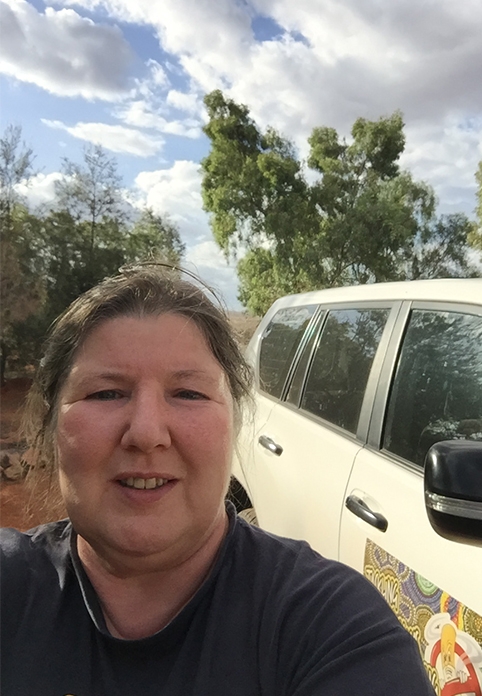This site may not work properly using older versions of Edge and Internet Explorer. You should upgrade your browser to the latest Chrome, Firefox, Edge, Safari, or any other modern browser of your choice. Click here for more information.
Your Stories
This is where we tell your stories, cover topical issues and promote meaningful initiatives.
Opening the conversation on sexual health
CRANAplus Member and Fellow, Lyn Byers, writes about the importance of sexual health education in the remote setting, and shares her tips for broaching the subject.
Over 50% of the Aboriginal and Torres Strait Islander population across Australia is young – less than 25 years old. There are high rates of sexually transmitted infections (STIs) in young people right across Australia, but in very remote Australia there is limited access to methods of birth control or specialist services, and limited knowledge of sexual health. Remote communities rely on remote area nurses (RANs) for accurate information, screening and treatment.
The most common STIs, chlamydia, gonorrhoea, trichomonas and syphilis, have few or no symptoms. All STIs in pregnant women can have serious consequences both for the woman and her baby.
Syphilis has significantly increased in Australia over the last ten years, now declared a Communicable Disease Incident of National Significance by Australia’s Chief Medical Officer, and women of reproductive age are especially at risk.
Exploring sexual health matters with young people provides them with accurate information about how their body works and how they can care for themselves. Early detection of STIs can prevent long-term health complications, such as infertility or chronic infections.
Young people need to learn about puberty and the normal changes occurring in their bodies, too.
Working in very remote communities where English is not the first language for many people, RANs become adept at sketching anatomy diagrams to illustrate a concept and sourcing pictorial resources.
Participating in a group health session organised by the local youth workers, one RAN found that the grandmothers, mothers and girls were all fascinated by the menstruation cycle story. Normalising the story and offering practical tips on how to manage menstrual bleeding gave the women more control over their bodies. Understanding fertility helped the women to understand concepts such as contraception, STIs and cervical screening – often all lumped together under ‘women’s health’ in remote clinic settings.
Issues such as sexual dysfunction, trauma, or abuse may not be revealed unless the RAN creates a safe and supportive environment. Addressing these concerns can improve quality of life, enhance relationships, and prevent further psychological distress.
A young man with a serious mental illness declined to take his anti-psychotic medications. The RAN in his community was attentive to his concerns and found the patient attributed his impotence to the anti-psychotic medication he was prescribed – a valid concern. He and his partner wanted to have children. Working with the psychiatry team, a suitable alternative medication was found. The young man remained mentally well, and he and his partner had a child a year later.
Being skilled in this area of health is essential to reducing health disparities. It helps to ensure that all patients, regardless of gender, orientation, or background, receive the same level of attentive and non-judgmental care. It fosters trust between patients and RANs, promoting better health outcomes and patient satisfaction.
- Consider terminology. Think about the many relationships people have and what it might mean to the patient if asked, “Are you in a stable relationship?” A stable relationship could be two partners, three partners, an occasional partner, platonic or some other variation. Another example is asking if someone is married. They could answer yes and might be married but haven’t seen their married partner for many years, or be living with someone different. Using the words, “Are you sexually active?” means the RAN will need to explore what sexually active means to the patient; does it include penetrative vaginal, oral, anal sex, or kissing and cuddling?
- Communication techniques. Use communication techniques such as open and closed questions, silence, clarifying, summarising, and reflecting. Questions that don’t have underlying assumptions, are precise and useful, and are understood by both patient and clinician, are the aim.
- Sideways talk. Explain the issue without relating it to the person, then bring the person in. For example, ask, “Have you seen the ads on TV for STI testing? Have you thought about having an STI test?”
- Normalise. For example, say, “We offer this to everyone.”
- Hook. For example, say, “Have you heard about the HPV vaccine?” Alternatively, say, “Do you have one of those rods (Implanon contraceptive) in your arm?”
- Incorporate. For example, say, “While we are talking about cervical screening, can I also talk about your sexual health?”
- Warning shot. For example, state, “I am going to ask you some personal questions, these are all for a reason, and they are all confidential. Is that ok with you?”
- Importantly, never apologise for asking questions related to sexual health. Understanding a patient’s sexual health enables RANs to identify potential risks, prevent diseases, and offer more personalised treatment options.
For further learning, check out organisations like ASHM, SHINE SA, True, Sexual Health Quarters, Family Planning Welfare Association of NT Inc or Remote Primary Health Care Manuals that contain chapters covering sexual and reproductive health matters tailored to the remote context.

